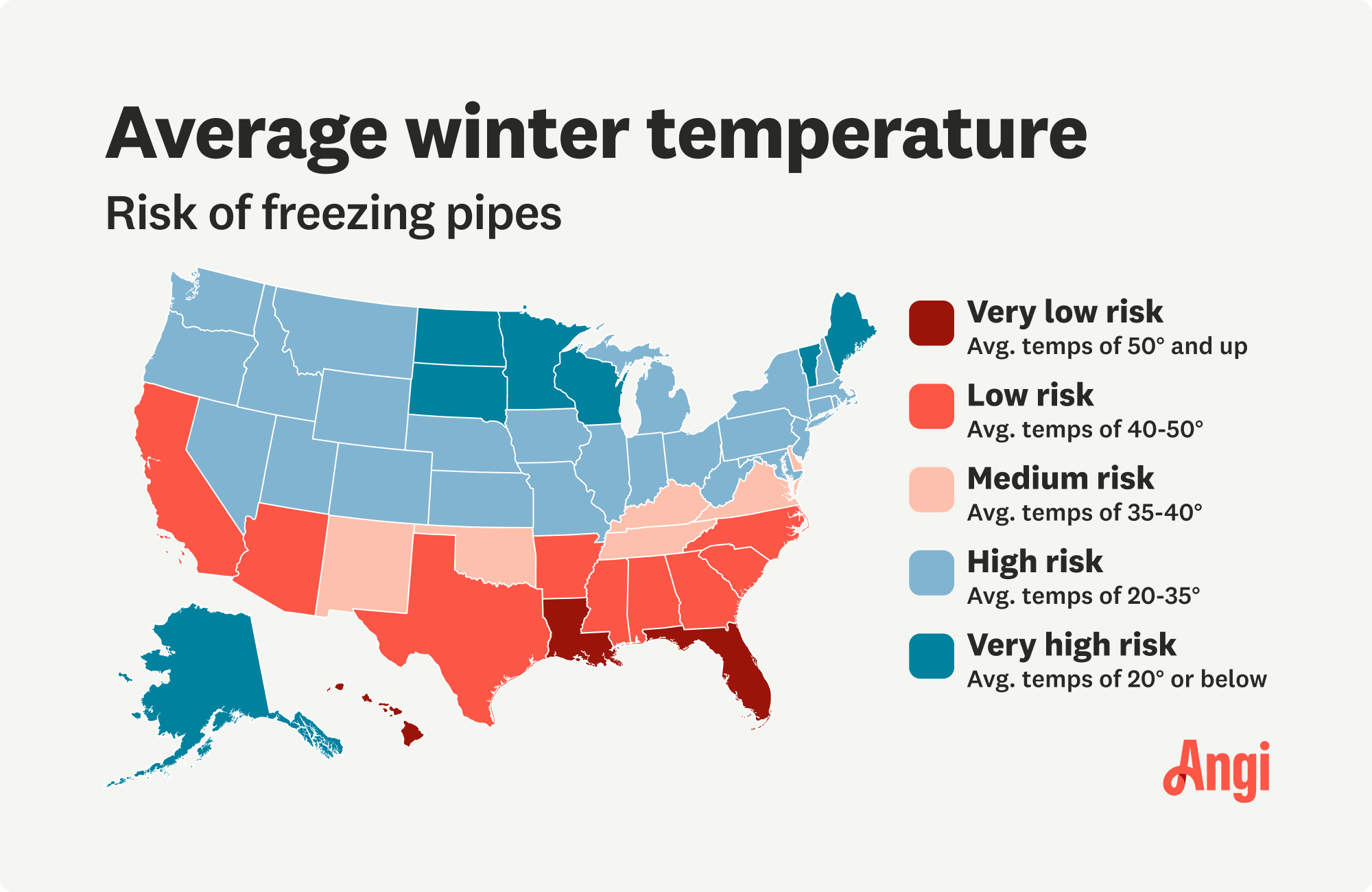
A main water shut-off valve controls water flow for your entire home. Here we break down the cost to replace a main water shut-off valve.
Freezing weather could mean frozen pipes


Toilet pipes can freeze if they’re exposed to temperatures below 32 degrees Fahrenheit.
If your toilet pipes freeze, you may need to call a plumber to help thaw them out and check for cracked pipes.
To keep toilet pipes from freezing in the winter, you can take preventative measures to protect them from the cold.
If the weather outside is frightful, a frozen toilet can make it even worse. But can toilets freeze in cold weather? The answer to this is yes, however, it's not the actual toilet that freezes but rather the plumbing lines leading to and from the toilet. Here’s why toilets freeze in cold weather and what you can do to thaw it out and prevent it from happening again.
Cold weather doesn’t necessarily mean frozen pipes. Pipes can freeze if they’re exposed to temperatures 32 degrees Fahrenheit or lower. The pipe itself offers some insulation from the cold, and insulated pipes can keep the water inside a little bit warmer. This reduces the likelihood the water inside will freeze as soon as the external temperature reaches 32 degrees, but the chances increase as the temperature drops.

Toilets have two plumbing lines, the supply line that comes from the wall and supplies fresh water for flushing and the drain line that carries away waste—both can freeze in the cold weather. Toilets are especially susceptible to frozen pipes if the plumbing is in exterior walls, unheated basements, or crawl spaces that are colder than the main living spaces.
First, you have to learn how to tell if pipes are frozen. For a toilet, this may mean that it won’t flush or refill, and you may see frost or condensation on the pipes. If you can access the pipes, you can also tap on them to see if they sound solid.
If you realize you have frozen toilet pipes, you might be able to thaw them yourself, but only if you have access to them. In many cases, toilet plumbing is inside the wall and will require a plumber’s help to thaw out. If you can see the toilet pipes in the basement or a crawl space, you can try the following to get them flowing again:
Use a hair dryer to blow warm air and thaw them or wrap a heating pad, hot towels, or heating tape around the pipe.
Place a space heater near the pipes—this works best in small spaces.
Pour warm water into the toilet bowl or tank and flush it to clear a frozen drain pipe.
Thawing a frozen pipe before it bursts is crucial. We recommend contacting a plumber to ensure your pipes are thawed effectively. If a pipe were to burst, it would likely require an expensive repair.
In cold weather, rather than dealing with a frozen toilet, it’s best to know how to keep pipes from freezing in the first place. Certain fixes for faucets, like dripping or covering an outdoor faucet, won’t work on toilets, so you have to try other methods. It will take some effort on your part to manage the temperature in your home and keep a vigilant eye on the daily forecast, but these precautions can help prevent bigger issues, like a burst pipe.
Hire a local plumber to add insulation to the pipes inside the wall or otherwise winterize your toilet’s pipes.
Maintain a steady temperature inside the home throughout the winter even if you’ll be away on vacation or for an extended period of time.
Wrap exposed pipes with foam insulation or heating cables.
Add insulation to the area around the pipes.
From average costs to expert advice, get all the answers you need to get your job done.

A main water shut-off valve controls water flow for your entire home. Here we break down the cost to replace a main water shut-off valve.

The average propane tank costs between $600 and $2,500, depending on the size, location, and more. Our expert guide explores all the factors.

The cost to add plumbing to a detached garage depends on several factors, including the type of plumbing and the garage's distance from your home.

Fixing a leaky faucet starts with knowing which type of faucet you have. Follow these steps to learn how to fix a leaky faucet in no time.

If you're looking to hire a mobile home plumbing expert, these are the questions to ask, red flags to look for, and steps to take after the job is done.

Cutting pipes can be easy, but this job requires some safety measures. Learn how to cut metal pipes quickly and safely for any plumbing project.